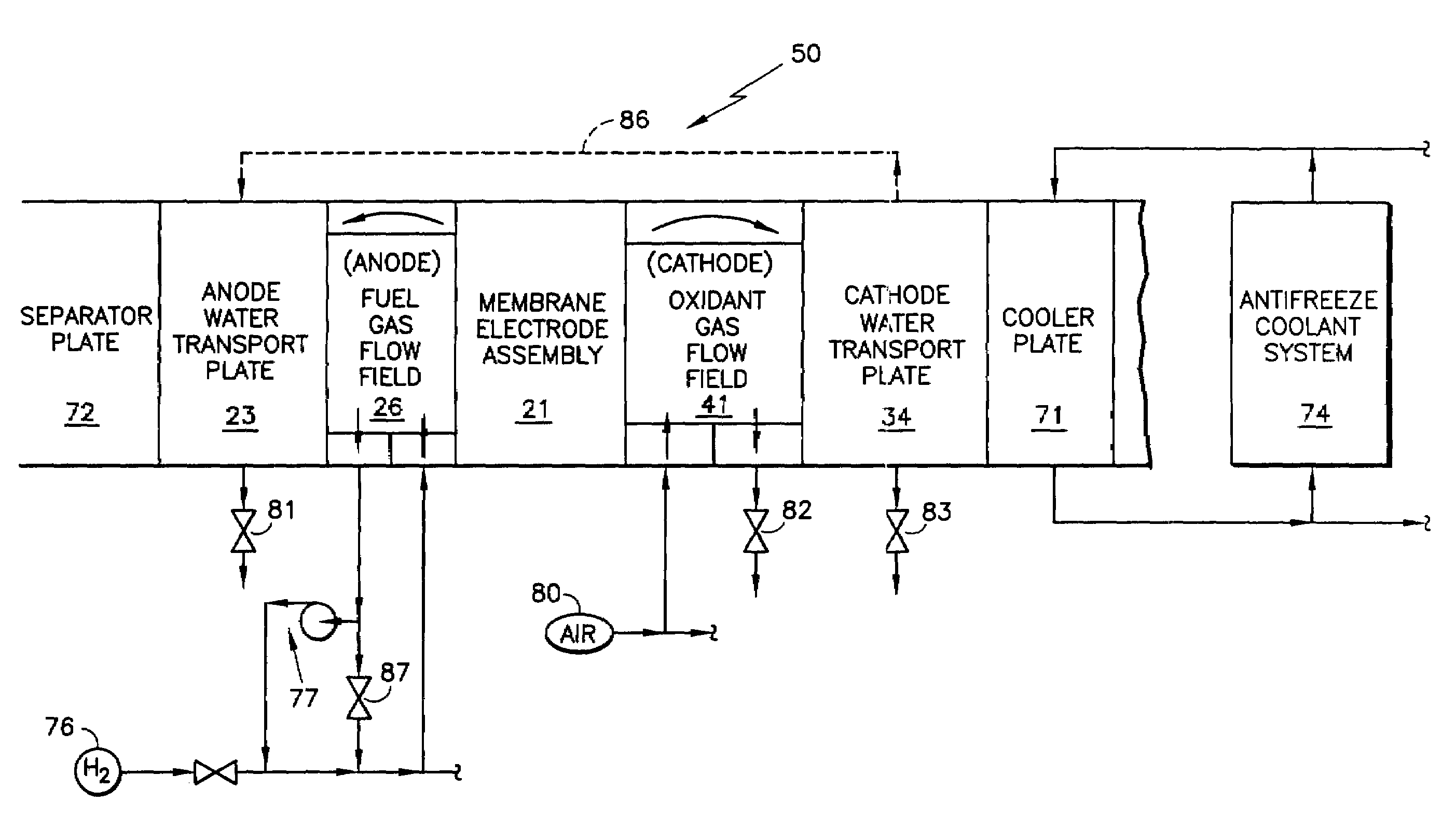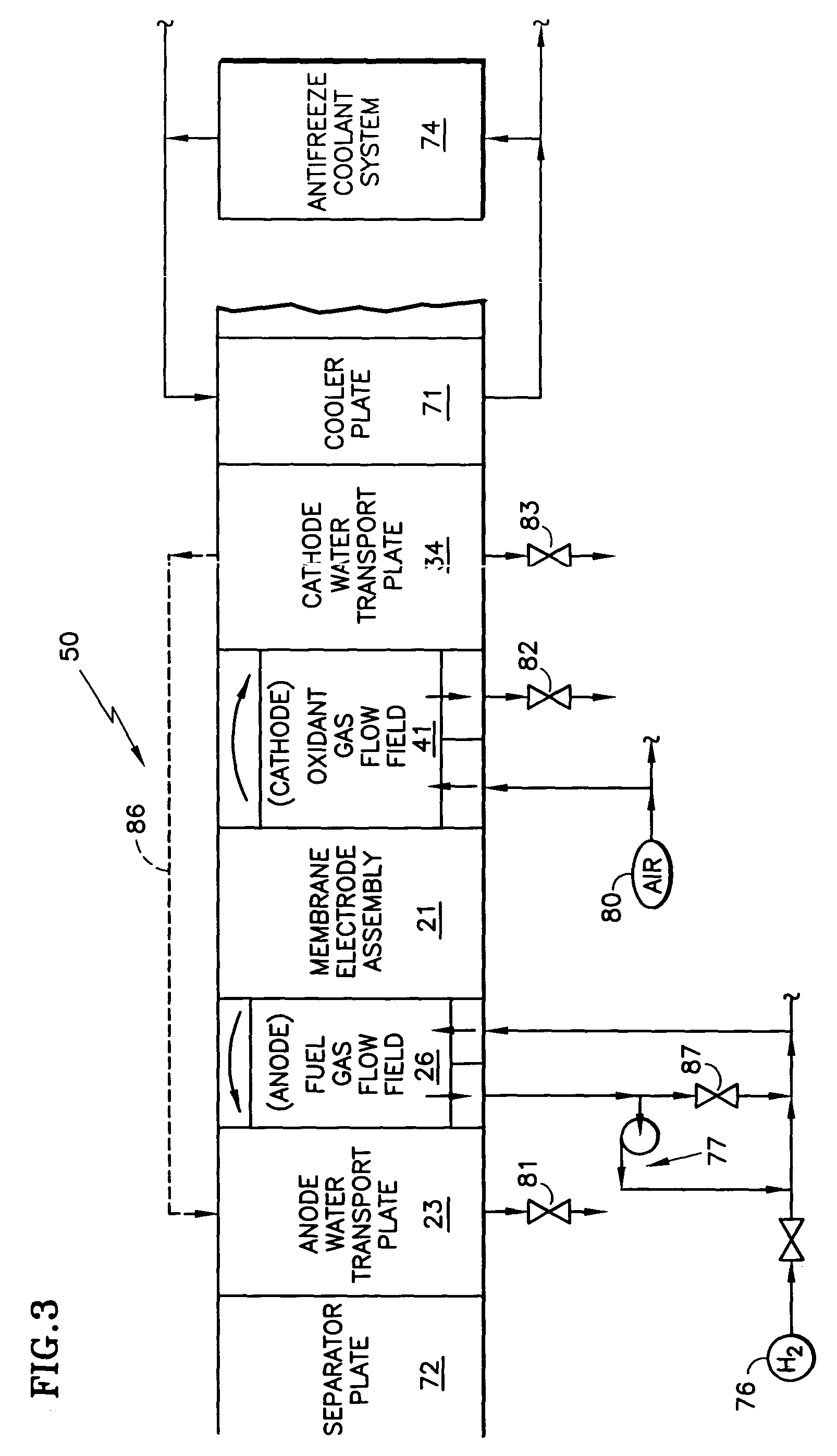Internal PEM fuel cell water management
a fuel cell and pem technology, applied in the field of internal pem fuel cell water management, can solve the problems of large capillary pressure, achieve the effects of reducing parasitic power, improving pem fuel cell stacks, and reducing parasitic power
- Summary
- Abstract
- Description
- Claims
- Application Information
AI Technical Summary
Benefits of technology
Problems solved by technology
Method used
Image
Examples
Embodiment Construction
[0026]Referring to FIG. 3, the concept of the present invention is illustrated schematically, in a fuel cell stack 50 having cooler plates 71 separating the fuel cells into groups of 2-4 fuel cells per group, and with separator plates 72 separating fuel cells which are not themselves separated by the cooler plates. Antifreeze coolant is provided by an antifreeze coolant system 74 to all of the cooler plates 71 of the stack 50.
[0027]A fuel such as hydrogen is provided to the anode fuel gas flow field from a source 76 and may include a fuel recycle loop 77. An oxidant, such as oxygen or air 80, may be provided to the cathode oxidant gas flow field 41. Valves 81, 83 may be provided so as to drain water from the water transport plates 23, 34. Valves 82, 87 may be provided to control the reactant pressures in the fuel gas flow field 26 and the oxidant gas flow field 41.
[0028]The concept of the invention is providing water transfer capability 86 for water to flow internally of the fuel ce...
PUM
| Property | Measurement | Unit |
|---|---|---|
| volume % | aaaaa | aaaaa |
| volume % | aaaaa | aaaaa |
| volume % | aaaaa | aaaaa |
Abstract
Description
Claims
Application Information
 Login to View More
Login to View More - R&D
- Intellectual Property
- Life Sciences
- Materials
- Tech Scout
- Unparalleled Data Quality
- Higher Quality Content
- 60% Fewer Hallucinations
Browse by: Latest US Patents, China's latest patents, Technical Efficacy Thesaurus, Application Domain, Technology Topic, Popular Technical Reports.
© 2025 PatSnap. All rights reserved.Legal|Privacy policy|Modern Slavery Act Transparency Statement|Sitemap|About US| Contact US: help@patsnap.com



